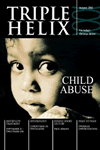Paul Brand was characterised by an unfettered originality in his approach to a clinical challenge, but even his immense academic and professional achievements were eclipsed by his compassion and concern for the whole person. Although he was my uncle, I never had the privilege of training or working with him, but he inspired me from pre-medical school days through my later training in plastic and hand surgery. He was always the standard, the ideal, the hero.
Paul was initially a reluctant doctor. Repulsed by the pus and gore he observed as a child while watching his missionary father giving simple medical care to local folk in the hills of South India, he rejected advice to study medicine and instead trained as a carpenter and builder. But his interest was later kindled through the practical teaching at missionary training colony, and he entered UCH London, where he met his wife Margaret, qualifying during the Second World War. After marrying, they followed a call back to South India, to teach surgery at Vellore Christian Medical College.
Starting as a general surgeon, Paul quickly turned to Orthopaedics and within a short time was deeply challenged by an encounter with Dr Robert Cochrane at Chingleput. Cochrane was the leading expert in leprosy but could not explain the pattern of deformity or the reason for loss of tissue from the extremities. Paul had already demonstrated a passion for clinical enquiry and research and threw himself into discovering answers to these and other conundrums . He faced considerable prejudice and opposition to treating these patients within a general hospital setting at first, but gradually barriers were overcome and the first great phase of Paul's career began.
Paul was a free thinker who constantly questioned established dogma and his contributions to the field of Leprosy were enormous. At an early stage he was able to demonstrate the regular and predictable pattern of paresis in leprosy, and identified the influence of temperature on the site of the nerve lesion. In developing tendon transfer operations for high ulnar nerve palsy, his extensive experience gained him worldwide recognition in hand surgery circles, when his work was published. But his reconstructive skills were also employed in a wide range of other procedures in the upper and lower limb, and in plastic surgical restoration of noses, eyebrows and eyelids.
Paul was able to show that fingers and toes do not just fall off in leprosy; they wear away progressively by a process of neuropathic ulceration and secondary infection after often trivial injuries. This finding in itself was revolutionary, but it led Paul on to the conscious realisation that one must give care to the individual as a whole. Prevention of deformity and tissue loss was essential. He became in these early years physiotherapist, OT, orthotist, toolmaker and technician all rolled into one as he set in motion major rehabilitation and retraining projects based around Vellore. He published on the care of the anaesthetic foot and later this work was extrapolated to management of the foot in diabetes. Many doctors came to Vellore to train in leprosy reconstruction, or were taught by Paul in subsequent years during his extensive travelling to visit mission and government hospitals around the world. Margaret meanwhile had become a leading authority in ophthalmological problems in leprosy and in later years joined Paul in these teaching tours. By the early 1960s Paul's work was being recognised in the United States, and he was invited to speak at international meetings of their Plastic and Reconstructive and Hand Surgery societies.
In 1960 Paul received the Albert Lasker award 'for outstanding leadership and service in the field of rehabilitation'. The CBE followed in 1961. Twice he gave the Hunterian oration at the Royal College of Surgeons in London. Between 1963 and 1966 he was influential in the founding of the All-Africa Leprosy Rehabilitation and Training Centre (ALERT) in Addis Ababa. Several other honours followed, mainly in the USA.
In 1966 Paul moved with Margaret and their six children to Louisiana to take up the post of Chief of Rehabilitation at the national leprosy centre in Carville. Over twenty years there he was able to expand and develop his research interests, to teach, and to inspire numerous visiting specialists and trainees with his humble and passionate approach. His book, Clinical Mechanics of the Hand was immediately received as a classic by hand surgeons and therapists, and now into its third edition remains indispensable in this field. His interest in biomechanics was paralleled by a growing fascination with the investigation of pain, and particularly the problems caused by its absence.
After retiring in the mid-1980s, Paul began writing a number of books, often in collaboration with Philip Yancey, reflecting on the Creator's design as evidenced in our physical bodies. Pain - the Gift Nobody Wants is perhaps the best of them all, not least because it contains the personal memoirs of his life, as well as some fascinating insights into the gift of pain. He writes in a beautifully direct but gentle conversational style, with a whimsical note pervading even his finest professional publications.
Jesus carried scars and disability even after the resurrection and in so doing identified with the humanity that he loved. Paul loved to preach on the wounds of Christ and followed his master in giving full honour and respect to those afflicted with deformity and disability. May God help us to do the same.
Paul Wilson Brand (b Southern India 1914; q London 1943; CBE, FRCS), died on 8 July 2003 from complications related to a subdural haematoma.
































